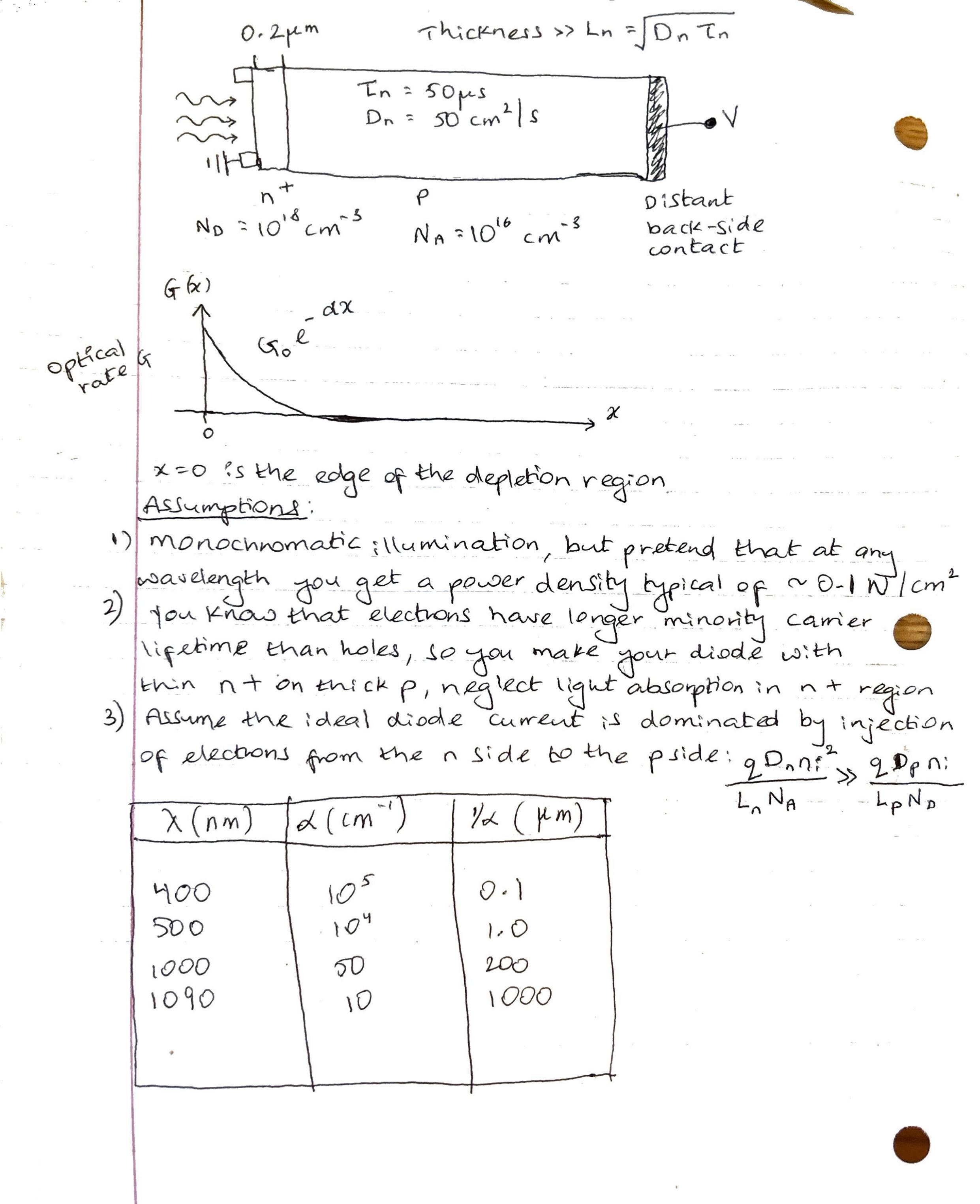
Source: Chegg
Dominance of Minority Carrier Currents
In Regions I and III of a semiconductor device, the total current is composed of two components: Jn (current of electrons) and Jp (current of holes). However, the focus is on the minority carrier current since it predominantly influences the current flow due to recombination. The majority carrier currents can be calculated based on the constancy of the total current.
Finding the Recombination Rate
Under the assumption of low injection, the recombination rate for Shockley-Read-Hall (SRH) recombination can be expressed in a simplified form for p-type material and low bias conditions. The recombination rate for electrons in p-type material is determined based on certain carrier concentrations and minority carrier lifetimes.
Finding the Generation Rate
The generation rate in a semiconductor device can be given by an equation involving the photon flux at the surface, absorption coefficient, and distance into the material. While the generation rate may vary with time and wavelength, for steady-state conditions, time dependence is disregarded. The exponential form of the generation rate influences the differential equation to be solved.
Finding the General Solution
The general solution to the differential equations in the semiconductor device depends on the equations for recombination and generation. Various common general solutions exist, with constants that are determined by boundary conditions and specific characteristics of the device.
Finding the Particular Solution
The particular solution is determined by the conditions at the edges or regions of the semiconductor device. Boundary conditions at the edges of depletion regions or surfaces play a crucial role in defining the particular solution. The surface recombination velocity and specific boundary conditions at the surface further impact the solution.
Finding Diffusion Currents in Regions I and III
Once the carrier concentrations are determined, the minority carrier currents in Regions I and III can be calculated using general equations. These currents play a significant role in understanding the behavior and characteristics of the semiconductor device.

Source: SlidePlayer
Feel free to comment your thoughts.
